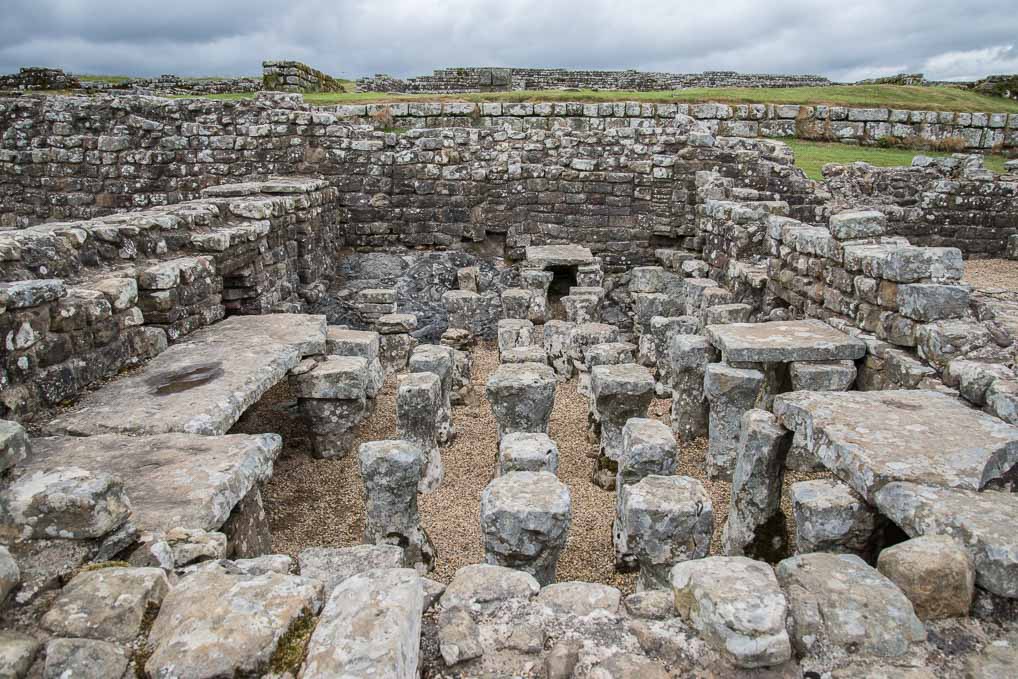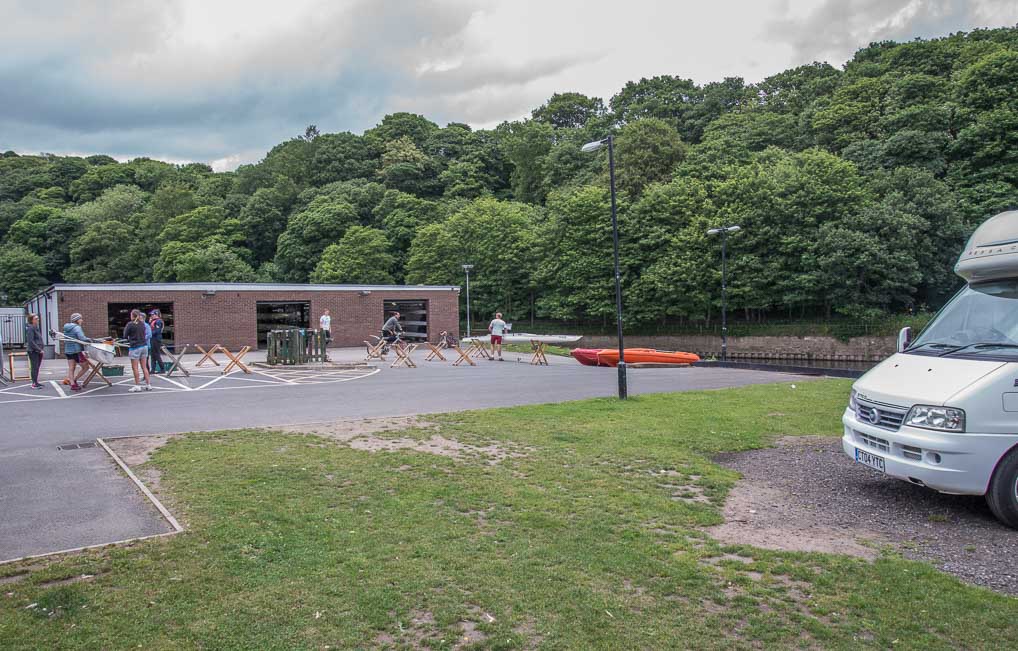We only had 50 miles or so to reach our final stop on this trip in Durham, but I was determined that before the end of the trip we would add another UNESCO World Heritage Site to our collection. UNESCO has given World Heritage Status to the Frontiers of the Roman Empire, part of which is, of course Hadrian’s Wall.
Hadrian’s wall was built in AD122 under the Emperor Hadrian to mark the northernmost boundary of the Roman Empire. The Roman’s had tried to subdue Scotland ever since the Emperor Claudius’ invasion of England in AD43, but Hadrian decided to consolidate rather than expand in order to manage monetary and military costs. The wall stretches 73 miles from England’s west to east coast and is the largest single Roman structure in the world.

A centurion and guard dog on the frontiers of empire
We chose to visit one of the 16 major forts along the wall, in our case Vercovicium at Housesteads. Our journey therefore had to deviate 25 miles or so from our intended route, often along a road which runs along the line of the wall and through stunning Northumbrian countryside.
On arrival there is a walk of half a mile or so from the car park to a small museum run by English Heritage which explains the layout of the fort, since only the lower portion of the walls are visible. As usual we were staggered by the level of engineering the Romans achieved, with their characteristic underfloor heating systems and as a later addition to the fort even a set of baths!

Remains of the barracks at the fort

Roman Hypercaust or underfloor heating
From each end of the fort, which is situated at the top of a steep escarpment, making attack from the north all but impossible, the wall snakes across the moorland making use of the topography to ensure that the north side of the wall is often perched on top of precipitous cliffs or steep slopes.

Hadrian’s Wall
A match for the Roman remains in this section of the wall is the stunning Northumbrian countryside. Sarah and I have not really explored this section of England before and we immediately started making plans to revisit, possibly to walk a section of the footpath that runs the length of the wall.
Basil retraced his steps back to the A1 and then transported us south to our base for the next two nights. It is a first rate CL located at the Durham Amateur Rowing Club (54.773306, -1.557651 £15 a night including electricity and access to showers and toilets during the daytime), which is right on the bank of the River Wear and it is only a ten to fifteen minute walk along the river to the centre of Durham. Since we have arrived there have been dozens of students from the local University taking boats out onto the river for practise.

Our CL and students preparing their boats
The reason for our visit to Durham is that it is a city we have always wanted to visit and so tomorrow we will have an ideal opportunity to spend a full day to explore.
